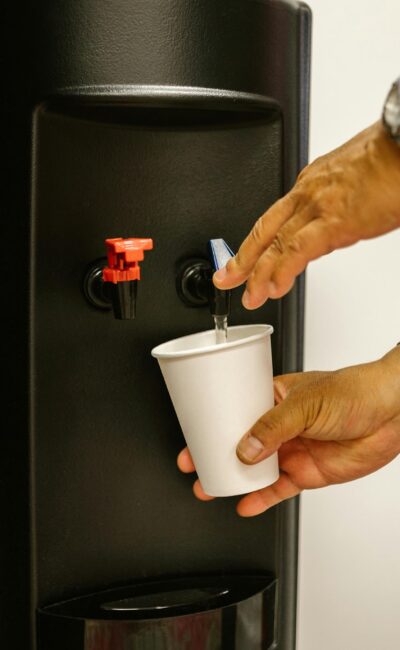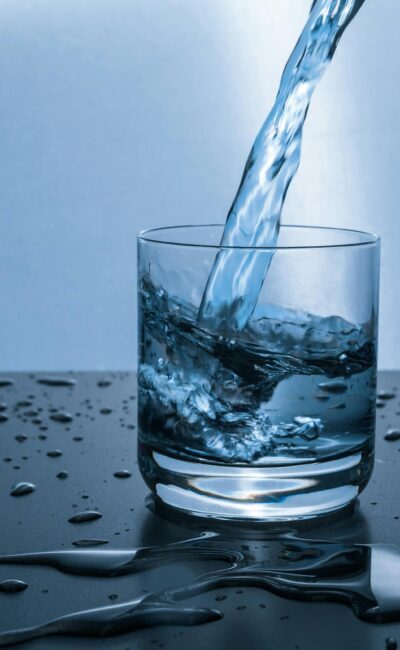Updated July 7, 2024
Do you know what’s in your tap water? Each municipality is responsible for providing a public report for consumers about the quality of their tap water. It reveals the various types of contaminants, many of which are pharmaceutical compounds. The United States Geological Survey (USGS) has conducted studies that have found cotinine, carbamazepine, caffeine, and diphenhydramine among the list of pharmaceuticals regularly found in water.
One particular study measured water samples from a network of 139 streams across 30 states. The occurrence of pharmaceuticals in water, in addition to hormones and other organic wastewater contaminants, were found in 80 percent of streams sampled, stemming from disposal from residential, industrial, and agricultural sources. Among the mix of detected pharmaceutical pollution in this instance were antidepressants, antibiotics, blood thinners, and heart medications.
The World Health Organization (WHO) also identifies both human and veterinary drugs and feed additives as contaminating water through excretion, disposal, waste, and the soil before eventually coming into contact with drinking water sources. In its report on the topic, WHO points out that drinking water treatment processes are not designed specifically to remove pharmaceuticals in water. Although there are practices that may, some are more effective than others.
For example, water treatment plants that use free chlorine as part of the disinfectant process can remove up to approximately 50 percent of pharmaceutical residue, whereas processes that use chloramines have a lower removal rate. Advanced water treatment processes, including advanced oxidation and activated carbon, achieve far higher removal rates of pharmaceuticals in water at above 99 percent.
Since consumers don’t have control over what’s in their tap water, their healthiest choice is to rely on purified water to prevent the health risks associated with exposure to pharmaceutical contamination and other harmful chemicals and pollutants commonly found in tap water.
Health Risks Associated with Human Exposure to Pharmaceuticals in Water
According to a 2020 study by the Department of Comparative Biosciences, University of Illinois at Urbana-Champaign, the cattle industry largely contributes to pharmaceuticals in water due to the growth-regulating steroids and hormones injected to enhance cattle growth rates. Sewage plants and human excretion have also been named sources for polluting water. The study identifies hormones, such as estrogen, have been linked to an increase in breast cancer in women, infertility in men, and other adverse effects to a person’s reproductive system.
Furthermore, a collaborative study conducted by researchers from the Indian Institute of Technology Delhi, Georgia Institute of Technology, and Michigan State University also identifies bacterial and viral infections as one of the top human health risks of contaminated water. The study poses challenges that many water treatment facilities still face in terms of projected measurement of pharmaceuticals in water versus actual measurements and risks posed due to mixing of endocrine disrupting chemicals (EDCs).
Presence of Endocrine Disrupting Chemicals
One of the main health risks linked to pharmaceuticals found in water from the tap is reproductive impairment due specifically to EDCs, which impact the endocrine system and impairs fertility and development in humans. They also cause neurological and behavioral changes and have been linked to obesity and type 2 diabetes, according to the Hormone Health Network.
EDCs stem from pharmaceutical residues, but are also found in many common household products, such as cosmetics, lotions, and antibacterial soaps. They’re also found in pesticides, herbicides, and plastic packaging. The University of Illinois at Urbana-Champaign study identified that pesticides can be transported in water long distances from their sources and impact human health.
As an example, it references a 40 percent reduced sperm count in men who had been exposed to herbicides used in neighboring facilities, specifically atrazine and alachlor. Another reference in the study showed a link between metolachlor (herbicide) contamination in drinking water and an intrauterine growth retardation. Exposure to EDCs have cumulative effects on the body, which means that even if there aren’t large amounts found in tap water at a given time, consuming contaminated water over the years can still pose harmful health risks.
Additionally, exposure bisphenol A (BPA), which is a classified EDC, has been a high public health concern when it comes to drinking water. BPA exposure found in polycarbonate plastics used for food and drink packaging is linked to impaired reproductive function in both men and women, including increased risk of miscarriage, low birth weights, and reduced sperm levels, among other health effects.
Proper Disposal of Pharmaceuticals
Part of reducing pharmaceutical pollutants in water requires following proper disposal best practices. Since not all water treatment processes are the same and accurate levels of pharmaceuticals can’t always be detected, prevention is key to reduce risk of exposure. The U.S. Food and Drug Administration recommends two key ways you can limit your pharmaceutical footprint at home.
- Do not flush unused medication down the drain, but rather use drug take-back programs within your community for safe disposal. The U.S. Drug Enforcement Administration sponsors a National Prescription Drug Take Back Day and certain pharmacies may offer mail-back programs or medicine drop-off boxes.
- If a take-back program is not an option for you, dispose of them in your household trash with other undesirable products like used coffee grounds or cat litter. Take the remaining medications out of their packages, crush, and mix them with these products. Put them into a sealed container and throw away.
On a larger scale the U.S. Environmental Protection Agency (EPA) has focused on research and implementation of certain regulations in the past, such as the Safe Drinking Water Act, to assess and limit the amount of contaminants, including pharmaceuticals, in tap water. However, it also addressed concerns regarding difficulties in implementing and managing hazardous waste and the regular documentation of the presence of various pharmaceuticals active ingredients still present in surface waters and groundwater.
Prevention is crucial, but to err on the side of safety for home consumption, at-home water filtration is the best bet.
How At-Home Water Filtration Can Help
City water systems have certain federal regulations they follow to limit the amount of contaminants allowed in tap water. The EPA established secondary standards known as the National Primary Drinking Water Regulations that set the mandatory water quality standards or maximum contaminant levels for drinking water. However, based on the water source, how the water is treated, how often it’s checked, and other varying factors, tap water in certain regions is less contaminated than other municipalities and none are free from contaminants altogether.
With an at-home water filtration system like FloWater, you and your family benefit from a water purification system that removes 99 percent of the common pollutants, chemicals, and pharmaceuticals in water. The result is healthier, better tasting water for everyday use.
FloWater’s Advanced Seven-Step Filtration Process
Crisp, clean water on-demand is achieved through an advanced seven-step filtration process designed to transform your tap water and remove all contaminants, while also improving the taste and health benefits.
Stage One: Purify
The first filtration stage purifies tap water. The sediment filter captures dirt, dust, and solid impurities that wind up in your water either from its original source or from passing through the water pipes.
The carbon filter is next and removes the smaller particles, such as radon, hydrogen sulfide, and heavy metals, and strips away unpleasant odors and tastes that may linger as a result of contaminated water.
To finish out this first stage, an advanced osmosis filter strips out any remaining contaminants through a semipermeable membrane. This removes bacteria, viruses, pesticides, and pharmaceuticals, in addition to several other pollutants.
Stage Two: Improve
The second filtration stage takes the newly purified water and improves upon it by adding back essential minerals and electrolytes. The activated oxygen filter adds small amounts of activated oxygen to the water, which naturally sanitize the tanks and internal system. It also increases the level of oxygen available for your blood and muscles. Plus, it improves the water’s taste.
The fifth filter adds an alkaline enhancement of ten trace minerals to raise the pH level of the water that comes out of the tap. This helps to neutralize acidity in the body and alleviate stress from your internal organs.
Then, the water passes through the electrolyte enhancement which adds magnesium, potassium, calcium, and sodium to the water to support your body’s immune system, bone strength, and cell repair.
Stage Three: Finish
The final coconut carbon filter is the finish of the advanced process. It adds a fresh, crisp taste by removing all lingering odors and tastes. By using real coconut husks, any leftover tiny particles are captured and absorbed leaving you with the cleanest, best-tasting water available.
With all the possible contaminants that can affect your health and create a less than desirable drinking experience, having the option of an at-home filtration system is becoming more common among households that want the assurance of purified water for everyday consumption.
Preventing Pharmaceuticals in Water
Being informed about the pharmaceuticals found in water and the processes in place on how to reduce pollution or eliminate them is important. Check with your city’s water service for updated reports that list what contaminants are present in your tap water. Prevention is another key step in eliminating pharmaceuticals in water. Though you can do your part at-home by disposing of any medications responsibly, it’s largely up to the manufacturers and facilities that contribute to the contamination.
Finally, relying on an at-home water purification system ensures you’re drinking the healthiest possible water without fear of pharmaceuticals in water affecting the health of you and your family.
Sources:
https://www.usgs.gov/special-topic/water-science-school/science/pharmaceuticals-water
https://pubmed.ncbi.nlm.nih.gov/11944670/
https://www.health.harvard.edu/newsletter_article/drugs-in-the-water
https://www.who.int/water_sanitation_health/publications/2011/pharmaceuticals_20110601.pdf
https://www.ncbi.nlm.nih.gov/pmc/articles/PMC7139484/
https://www.ncbi.nlm.nih.gov/pmc/articles/PMC2996217/
https://www.hormone.org/your-health-and-hormones/endocrine-disrupting-chemicals-edcs
https://www.ncbi.nlm.nih.gov/pmc/articles/PMC5389172/
https://www.fda.gov/consumers/consumer-updates/where-and-how-dispose-unused-medicines
https://archive.epa.gov/ocir/hearings/testimony/110_2007_2008/web/pdf/2008_0415_bhg.pdf




